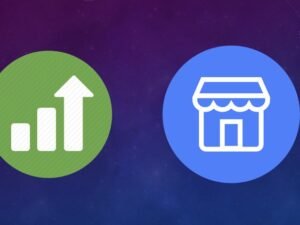- +91 844 9090 904
- info@maximumlearning.io
- Sector 62, Noida, 201309
- Description
- Curriculum
- FAQ
Get 50 productivity and self-improvement courses in 1 with this course! Here are just a few of the skills you’ll learn:
-
Personal development skills like mindfulness
-
Improve your focus and concentration
-
Goal setting
-
Increase motivation
-
Productivity fundamentals like time management
-
Eliminate interruptions
-
Healthy, growth mindsets
-
Boosting your efficiency
-
Mobile apps and software tools to boost your focus and productivity
-
Organizing your work environment
-
Become more disciplined
-
Email productivity
-
Realize your life purpose to direct your work in the most optimal direction
-
Use the pursuit of your life purpose to get you as motivated as possible and boost your long-term intrinsic motivation
This is a one-of-a-kind productivity course that will change the way you work to become more efficient and productive.
LIFELONG BENEFITS
You’ll use the productivity and personal development skills in this course for the rest of your life. As you practice these skills, you’ll become better and better at using them to improve your life.
The productivity skills will help you at work and business, and the personal development skills will help you in every facet of your everyday life!
FIND ENDLESS MOTIVATION WITH MINDFULNESS AND GOAL SETTING
Mindfulness is a tremendous personal development skill because through mindfulness, you’ll build a stronger relationship with yourself and develop a richer inner life. Understanding your deeper needs will give you the steering with your life.
Once you’ll understand where to take your life, you’ll unlock incredible and long-term motivation. It will all be aided by goal-setting to help you set a clear target towards which to channel your efforts.
ORGANIZE AND STRUCTURE YOUR LIFE
Once you know your life’s purpose and direction, you’ll have the drive to get there as fast as possible. This is where your quality of execution will become important.
This course will show you how to use time management to get more organized, and plan your days and weeks to only focus on the highest-priority projects.
ATTAIN COMPOUNDING PRODUCTIVITY GAINS!
With personal development, you’ll get rid of bad habits that hold you back, with mindfulness you’ll get a direction for your life, and with the many productivity skills in this courses, you’ll increase your daily output by leaps in bounds!
Since there are so many productivity skills in this course, as you become better at applying them, you’ll grow your productivity exponentially, and accomplish more and more over time!
SIGN UP FOR THIS COURSE AND BECOME A PRODUCTIVITY MACHINE
You will learn how to be productive in:
-
Your daily work
-
Your weekly scheduling
-
And most importantly, you will learn to choose the right projects to work on in order to take your life in its best and most optimal direction
NOTE
In the course, I go over some productivity apps which might ask you for your email address, and some productivity products which are not free. I DO NOT collect any revenue or your emails for myself. I do not benefit from promoting those productivity products/apps. The only reason I recommend them in the course is that I think they will help you achieve the goals of the course.
INSTRUCTOR BACKGROUND
I’ve been an entrepreneur for 15+ years, have coached 1,000+ entrepreneurs in person, taught 700,000+ students, impacted millions of entrepreneurs worldwide creating 6 and 7-figure businesses in the process, and I would love to help you.
BONUSES INCLUDED
* Lots of extra freebies, downloadable worksheets, and exercises to make the course more interactive and valuable
* Personal invitation to my Facebook community after you complete the course
* Be entered to get chosen for my student of the month status and have your business featured
RESPONSIVE AND CARING INSTRUCTOR: WORLD-CLASS STUDENT SUPPORT
If you have questions, I am here to help! I answer 99% of student questions within 24 hours. Many students tell me that other instructors don’t respond. Well, I do because:
1) I care about my students.
2) I feel a responsibility to make sure that students get their money’s worth from the course.
MONEY-BACK GUARANTEE
This productivity course comes with an unconditional, Udemy-backed, 30-day money-back guarantee. This is not just a guarantee, it’s my personal promise to you that I will go out of my way to help you boost your productivity just like I’ve done for thousands of my other students.
Invest in your future. Enroll now and become a productivity star.
Productivity skill 1: Foundational productivity skills
-
1Productivity and personal development welcome! Also, mindset and what to expect
Welcome to this course on personal and business productivity. I am certain that as you apply the principles in this course, you will notice a significant improvement in your motivation levels, quality of work, and amazing results that will follow. Welcome to the course, and let's begin this journey.
-
2What brought you to this personal development and productivity course?
-
3How all personal productivity is tied to Dopamine and motivation
-
4How Dopamine fluctuates and how to manage your Dopamine levels
-
5Science and research-based path for motivation, high focus, and productivity
In this video, we discuss Dopamine and how to use Dopamine and motivation to help you create a transformation within you.
To give you a little background, here is more about Dopamine:
Dopamine is a neurotransmitter that plays a key role in the brain's reward and pleasure systems. It is involved in a wide range of functions, including motivation, attention, learning, and memory.
When we engage in activities that are pleasurable or rewarding, dopamine is released in the brain, which helps to create feelings of pleasure and satisfaction. This in turn can motivate us to seek out similar experiences in the future.
Dopamine is also involved in the brain's reward pathways, which are activated when we achieve a goal or accomplish something that we have been working towards. When we successfully complete a task or reach a goal, dopamine is released, which helps to reinforce the behavior and motivate us to continue pursuing similar goals in the future.
However, it's important to note that dopamine is just one of many neurotransmitters and hormones that are involved in motivation and goal-directed behavior. Other neurotransmitters such as serotonin, norepinephrine, and endorphins also play a role in these processes. Additionally, factors such as genetics, environment, and individual differences can also influence motivation and goal-directed behavior.
-
6Helpful practice activity to start the course: journal of your distractions
This video gives you a short set of exercises to try on your own. This is just to get you to start thinking about productivity, and how to apply principles like planning and scheduling to your day.
Here are some additional options to begin trying on your own. Of course, we'll discuss all these in more detail throughout the course:
Set clear and achievable goals: Having a clear idea of what you want to accomplish can help you stay focused and motivated. It's important to set specific, achievable goals that are aligned with your values and priorities.
Create a to-do list: A to-do list can help you keep track of your tasks and prioritize your workload. Consider using a task management tool to help you organize your tasks and stay on track.
Take breaks: It's important to take regular breaks to rest and recharge. Taking breaks can help you stay focused and avoid burnout.
Minimize distractions: Eliminating distractions can help you stay focused and be more productive. Consider turning off notifications on your phone or computer and finding a quiet, distraction-free workspace.
Seek support: Surrounding yourself with supportive people who can offer encouragement and guidance can help you stay motivated and on track.
Practice self-care: Taking care of your physical and mental health can help you be more productive. Make sure to get enough sleep, eat well, and engage in activities that help you relax and recharge.
Productivity skill 2: Neuroscience of productivity and personal development
-
7Section introduction - fundamentals of productivity and personal transformation
-
8Chunking and Pomodoro techniques for a productivity boost
The Pomodoro Technique is a time management method that was developed by Francesco Cirillo in the late 1980s. It involves working in short bursts (called "pomodoros") followed by short breaks.
Here's how the Pomodoro Technique typically works:
Choose a task to work on.
Set a timer for 25 minutes (the length of a "pomodoro").
Work on the task until the timer goes off.
Take a short break (usually 5-10 minutes).
After four pomodoros, take a longer break (usually 20-30 minutes).
The Pomodoro Technique can be an effective way to increase productivity by helping you stay focused and avoid burnout. It can also help you break larger tasks into smaller, more manageable chunks, which can make them feel less overwhelming.
To get started with the Pomodoro Technique, you'll need a timer and a way to track your pomodoros. You can use a physical timer.
-
9Automation, delegation, and budgeting introduction for a productivity boost
Automation and delegation are two productivity techniques that can help you manage your workload more efficiently and effectively.
Automation involves using technology or systems to automate repetitive or time-consuming tasks. This can help you save time and reduce the risk of errors. For example, you might use a task management tool to automate reminders or use a scheduling tool to automate appointments.
Delegation involves assigning tasks or responsibilities to other people, either within your organization or outside of it. This can help you focus on your most important tasks and allow you to make the most of your time and skills. When delegating tasks, it's important to choose the right person for the job and to provide clear instructions and expectations.
Both automation and delegation can be useful tools for increasing productivity, but it's important to use them in a balanced way. Over-reliance on automation can lead to a loss of human interaction and creativity, while over-delegating can lead to a lack of control and accountability. It's important to find the right balance for your needs and goals.
-
10Running your business with 1-hour/day work with outsourcing/automation
In this video, I discuss how if you correctly prioritize tasks, automate processes, and delegate work, you can run a business on just 1 hour per day in an extreme case. Although the more time you do spend on your business, the better the results will be.
-
115-20% of your time to work ON IT vs. IN IT for a business productivity boost
In this video I discuss the importance of improving how you work in addition of just focusing on the tasks you have to get done. Improving how you work can yield exponential results because of your increase in the quality of work.
-
12Parts of a morning routine for personal productivity
A good morning routine can set the tone for the rest of your day and help you feel more productive and balanced. Here are some additional tips for creating a morning routine that supports productivity and work-life balance:
1) Get enough sleep: Aim for 7-9 hours of sleep each night to help you feel rested and alert in the morning.
2) Start the day with self-care: Take a few minutes to take care of yourself in the morning. This might include stretching, meditating, or practicing deep breathing.
3) Plan your day: Take a few minutes to review your to-do list and schedule for the day. Consider prioritizing your most important tasks and setting aside specific blocks of time for each task.
4) Eat a healthy breakfast: Fuel your body with a nutritious breakfast to help you stay energized throughout the day.
5) Exercise: Incorporating physical activity into your morning routine can help you feel more energized and focused.
6) Set boundaries: Establish clear boundaries around your work and personal time to help you maintain a healthy work-life balance.
7) Practice gratitude: Take a few minutes to reflect on the things you are grateful for. This can help you start the day with a positive mindset.
Remember, it's important to find a routine that works for you and to be flexible. Don't be afraid to experiment and make adjustments as needed to find a routine that supports your productivity and well-being.
-
13Productivity fundamentals quiz
Productivity skill 3: Personal time management
-
14Section introduction - basics of Biology and Neuroscience for productivity
-
154 happiness hormones and Neurotransmitters: Dopamine, Serotonin, Endorphins, etc
-
16Happiness chemicals and hormones graphic: Dopamine, Serotonin, Oxytocin, etc.
-
17Understanding the role of Testosterone
-
18Natural ways to boost Testosterone
Exercise regularly: Resistance training, in particular, has been shown to increase testosterone levels.
Get enough sleep: Lack of sleep can lead to lower testosterone levels. Aim for 7-9 hours of sleep per night.
Eat a healthy diet: A diet rich in protein, healthy fats, and complex carbohydrates can support testosterone production.
Reduce stress: Chronic stress can lead to lower testosterone levels. Try incorporating stress-reducing activities such as meditation, yoga, or deep breathing into your daily routine.
Avoid substances that can lower testosterone: Alcohol, tobacco, and certain medications can all lower testosterone levels. Talk to your doctor about any substances you are taking and their potential impact on testosterone.
Time management with timeboxing
-
19Personal time management - section introduction
-
20Ultradian rhythm and cycles to do your most mentally complex work
Ultradian cycles are natural rhythms that occur within the body and are thought to play a role in various physiological and psychological processes. These cycles occur at a frequency of roughly 90-120 minutes and are believed to be related to the sleep-wake cycle and the body's internal clock, or circadian rhythm.
There are several theories about the function of ultradian cycles, but it is generally thought that they help to regulate energy levels, mood, and cognitive function. For example, it is believed that ultradian cycles may help to regulate the release of neurotransmitters such as dopamine and serotonin, which are involved in mood and cognition.
Some research suggests that ultradian cycles may also play a role in sleep, as they may be related to the stages of sleep and the body's natural sleep patterns.
It is thought that disruptions to ultradian cycles may be linked to various health problems, including fatigue, stress, and sleep disorders. Some studies have suggested that optimizing ultradian cycles may help to improve sleep quality, reduce fatigue, and improve overall health and well-being. However, more research is needed to fully understand the role of ultradian cycles in health and well-being.
-
21Prioritization, work-life-balance, and fulfillment
-
22Opening up time in your day through the right focus on the right tasks
-
23Real-life time management with additional variables
-
24Scheduling exercise
This is a short scheduling exercise to get you thinking more about it.
-
25Scheduling exercise - answer
This lecture contains the answers to the scheduling exercise from the previous lecture.
Productivity skill 4: Time management and prioritization for business
-
26Time management section introduction - one of the keys to personal productivity
-
27Timeboxing for time management
-
28Timeboxing for time management - exercise
-
29Timeboxing for time management - exercise answer
-
30Gaining perspective: the ability to identify and focus on what's most important
In this lecture I discuss the ability to identify and focus on the most important tasks. You already know about the power of focus when it comes to productivity. This lecture will tough upon additional points when it comes to gaining perspective of what's actually important for you to work on, which should help you become more productive by teaching you to better choose what you work on.
-
31Time management exercise
-
32Time management exercise - answer
Productivity Skill 5: Mindfulness & self-awareness to choose the right goals
-
33Section introduction - business case study of time management decision
-
34Getting started with the Google productivity suite
-
35Starting the time management prioritization in Google Sheets
-
36Using formulas in Google Sheets
-
37How to create charts and graphs from Google Sheets data
-
38Merging cells
-
39Finalizing the decision for business productivity and learning Pivot Tables
Productivity Skill 6: Life purpose and your greater direction
-
40Mindfulness section introduction and how the next few sections will flow
-
41Productivity and personal development starts with self-awareness and mindfulness
-
42Settings to practice mindfulness - the beginnings of personal development
-
43Starting to practice mindfulness - the beginning of your personal transformation
-
44How our changing technology and social environments affect our self awareness
-
45Defense mechanism of displacing blame vs. mindfulness and self-awareness
-
46Study: mindfulness vs. electric shock - which do you think people chose?
-
47The wandering mind - mindfulness and attention study
-
48Two mindfulness exercises you can start today - I encourage trying this
-
49Challenge to try guided meditations to see if it works for you
-
50Mindfulness challenge - I encourage trying this
-
51Mindfulness quiz
Productivity Skill 7: Goal setting & planning how you will achieve those goals
-
52Life purpose section introduction - another vital part of personal development
-
53Paradoxes: when your life purpose evolves, and when it stays the same
-
54Guiding ideas to help you formulate your life purpose
-
55The history (genealogy) of life purpose
-
56Are organizations handing you their purposes to work on?
-
57More exercises, questions, and actions to keep uncovering your life purpose
-
58How I discovered/discovering my life purpose by following my curiosity
-
59Role of education in finding life purpose: job vs. humanity/thinking/feeling
-
60Story from Dostoevsky about life purpose and not wasting time and urgency
-
61Life purpose exercise
-
62Life purpose exercise - answer
-
63Irony of fulfilling your life dreams
-
64Life purpose quiz
Productivity Skill 8: How to build healthy habits
-
65Introduction to goal setting for productivity and personal development
-
66SMART goals and ABC goals, and the difference of goals and wishes
-
67Example of goals vs. wishes and non-goals
-
68Intelligently choosing your goal difficulty for maximum motivation
-
69Creating systems and project prioritization to help you achieve your goals
-
70Managing how you set your goals to help you manage Dopamine levels
-
71Visualizations for discipline and finding willpower, and self-control
-
72Introduction to the research of Dr. Emily Balcetis
-
73Ego-based mental trap that will make you pursue mis-goals or wrong goals
-
74Don't listen to people who say you can't and all their reasons why not
-
75Why new years resolutions don't work
-
76Goal setting exercise
-
77Goal setting exercise - answer
-
78SMART goals exercise
-
79SMART goals exercise - answer
-
80Many-goals exercise
-
81Many-goals exercise - answer one
-
82Many-goals exercise - answer two
-
83Case study of decision-making by Paul Graham to reach gigantic goals
-
84Decision-making of Elon Musk with extreme risk taking
-
85Goal setting quiz
How long do I have access to the course materials?
You can view and review the lecture materials indefinitely, like an on-demand channel.
Can I take my courses with me wherever I go?
Definitely! If you have an internet connection, courses on Udemy are available on any device at any time. If you don't have an internet connection, some instructors also let their students download course lectures. That's up to the instructor though, so make sure you get on their good side!








